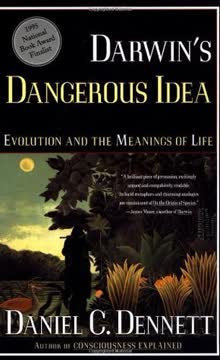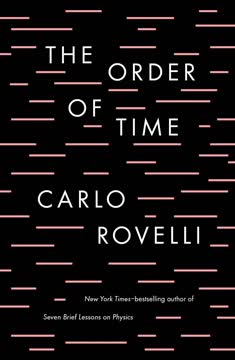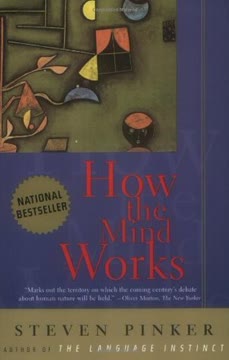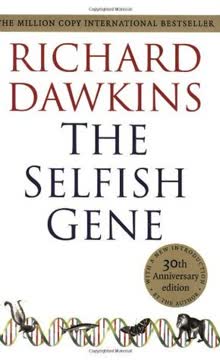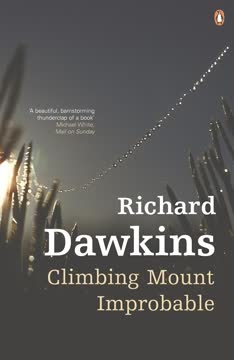نکات کلیدی
1. علم الهامبخش شگفتی و تخیل است
"احساس شگفتی و حیرت که علم میتواند به ما بدهد، یکی از بالاترین تجربیات روان انسان است."
شعر علمی کشف. علم یک جستجوی سرد و مکانیکی نیست، بلکه یک کاوش عمیق و شاعرانه در جهان است. بر خلاف افسانههای رمانتیک که واقعیت را سادهسازی میکنند، درک علمی پیچیدگی و زیباییای را آشکار میسازد که بسیار عمیقتر از داستانسراییهای سنتی است.
شگفتی فراتر از عرفان. رویکرد علمی نه تنها رازها را کاهش نمیدهد، بلکه به طرز تصاعدی آنها را گسترش میدهد. با لایهبرداری از درک، جنبههای پیچیده و شگفتانگیز واقعیت را کشف میکنیم. علم شگفتی را از یک مفهوم ایستا به یک تجربه پویا و در حال تحول تبدیل میکند.
الهامبخشی قابل دسترس. درک علمی محدود به دانشگاهها نیست، بلکه میتواند توسط همه افراد منتقل و مورد تقدیر قرار گیرد. کلید این است که کشفیات علمی را با اشتیاق، وضوح و قدردانی از شعر ذاتی پدیدههای طبیعی ارائه دهیم.
2. باز کردن رنگینکمان زیبایی عمیقتری را نمایان میکند
"رازها وقتی حل میشوند، شعر خود را از دست نمیدهند. برعکس؛ راهحل اغلب زیباتر از معما میشود."
شکستن تصورات شاعرانه نادرست. بر خلاف شاعران رمانتیک مانند کیتس، توضیح پدیدههای طبیعی جادو آنها را از بین نمیبرد. درک چگونگی تشکیل رنگینکمان، به عنوان مثال، فرآیندهای نوری و فیزیکی پیچیدهای را نمایان میکند که از تفسیرهای افسانهای زیباتر است.
پیچیدگی به عنوان زیبایی. توضیحات علمی زیبایی بنیادی سیستمهای طبیعی را نمایان میسازد. مکانیزمهای دقیق پشت پدیدههایی مانند انکسار نور، وراثت ژنتیکی و تکامل کیهانی بسیار جذابتر از روایتهای سادهانگارانه عرفانی هستند.
زیبایی شناختی. درک علمی یک رضایت عمیق زیباییشناختی را فراهم میکند که با نمایندگیهای هنری یا شاعرانه رقابت میکند و اغلب از آنها فراتر میرود. دقت ریاضی، ارتباطات غیرمنتظره و بینشهای روشنگرانه نوعی زیبایی متفاوت اما به همان اندازه قدرتمند را ارائه میدهد.
3. جهان بسیار باشکوهتر از افسانههای شاعرانه است
"هر فناوری به اندازه کافی پیشرفته از جادو غیرقابل تمایز است."
مقیاس و پیچیدگی کیهانی. جهان واقعی، همانطور که توسط تحقیقات علمی نمایان میشود، به طرز تصاعدی شگفتانگیزتر از توضیحات افسانهای انسانی است. کشفیات نجومی مقیاسهای زمانی و مکانی را نشان میدهند که روایتهای انسانمحور را تحتالشعاع قرار میدهند.
چالش ادعاهای ماورایی. توضیحات ماورایی و عرفانی در مقایسه با درک علمی رنگ میبازند. رازهای واقعی جهان—مکانیک کوانتومی، تکامل کیهانی، پیچیدگی ژنتیکی—بسیار بیشتر از داستانهای ماورایی ذهن را گسترش میدهند.
تواضع شناختی. کاوش علمی نیازمند پذیرش این است که چقدر کم میدانیم و در عین حال جشنوارهای از فرآیند کشف را جشن میگیرد. هر سوال پاسخ داده شده، چندین راز جدید را نمایان میسازد و چرخهای بیپایان از شگفتی و تحقیق ایجاد میکند.
4. ژنها همکاری میکنند، نه فقط خودخواهی
"ژنها، با تمام جدا بودنشان که به طور طبیعی در فرآیند داروینی انتخاب میشوند، بسیار همکاریکننده هستند."
تعاملات ژنتیکی همکاریمحور. ژنها موجودات جداگانه و رقابتی نیستند، بلکه شبکههای پیچیدهای هستند که درون گونهها همکاری میکنند. آنها استراتژیهای همکاری پیچیدهای را توسعه میدهند که بقا و سازگاری را ممکن میسازد.
اقلیم و تعامل ژنتیکی. ژنها در یک "اقلیم ژنتیکی" پویا عمل میکنند که بقا به تعاملات همکاریمحور بستگی دارد. ژنهای مختلف روابط همزیستی را توسعه میدهند و سیستمهای بیولوژیکی پیچیدهای را ایجاد میکنند که از اجزای فردی به ظاهر خودخواه ناشی میشوند.
فراتر از بقا فردی. فرآیند تکامل ژنهایی را ترجیح میدهد که میتوانند به طور مؤثر همکاری کنند و نشان میدهد که همکاری اغلب از رقابت خالص سودمندتر است. این دیدگاه درک دقیقتری از انتخاب طبیعی را نمایان میسازد.
5. مغزهای ما مدلهای واقعیت مجازی میسازند
"شما و من، ما انسانها، ما پستانداران، ما حیوانات، در یک دنیای مجازی زندگی میکنیم که از عناصری ساخته شده است که در سطوح بالاتر، برای نمایندگی از دنیای واقعی مفید هستند."
مغز به عنوان موتور شبیهسازی. مغز ما به طور مداوم مدلهای مجازی پیچیدهای از واقعیت میسازد و به طور فعال اطلاعات حسی را تفسیر میکند، نه اینکه به طور منفعل آن را دریافت کند. این فرآیند شامل تکنیکهای محاسباتی پیچیدهای است که سیگنالهای محیطی را پیشبینی و تفسیر میکند.
ادراک تطبیقی. ادراک یک فرآیند فعال و پیشبینیکننده است که در آن مغز فرضیاتی درباره جهان ایجاد میکند و به طور مداوم آنها را بهروزرسانی میکند. توهمات و ترفندهای ادراکی مکانیزمهای زیرین این سیستم مدلسازی پیچیده را نمایان میسازند.
واقعیت مجازی محدود. در حالی که مغز ما مدلهای مجازی ایجاد میکند، این مدلها صرفاً خیال نیستند، بلکه به دقت توسط ورودیهای حسی محدود شدهاند. این امر پردازش کارآمد را ممکن میسازد و در عین حال نمایندگیهای دقیقی از محیط ما را حفظ میکند.
6. تصادفها به طور آماری بیشتر از آنچه فکر میکنیم رایج هستند
"احتمال اینکه این اتفاق به طور تصادفی بیفتد به راحتی قابل محاسبه است."
سوءتفاهمهای آماری. بیشتر تصادفهای به ظاهر معجزهآسا در واقع زمانی که جمعیتهای بزرگ و تعاملات پیچیده را در نظر میگیریم، به طور احتمالی مورد انتظار هستند. آنچه به نظر ما ماورایی میرسد، اغلب توضیحات منطقی و ریاضی دارد.
جمعیت تصادفهای بالقوه. هر چه فرصتهای بیشتری برای وقوع رویدادهای تصادفی وجود داشته باشد، احتمال همراستاییهای غیرمعمول بیشتر میشود. درک شهودی ما از احتمال اغلب به طور بنیادی نادرست است و ما را به سمت بزرگنمایی اهمیت رویدادهای تصادفی سوق میدهد.
تعصب روانشناختی. انسانها به طور طبیعی تمایل دارند الگوها را ببینند و به رویدادهای تصادفی معنا بدهند. درک اصول آماری به کاهش این تعصبات شناختی کمک میکند و دیدگاه دقیقتری از جهان را فراهم میآورد.
7. علم شاعرانه بد بیشتر از آنکه روشن کند، گمراه میکند
"شعر بد در علم میتواند تخیل را به مسیرهای نادرست هدایت کند."
استعارههای خطرناک. زبان شاعرانه در گفتمان علمی میتواند فریبنده باشد اما ممکن است گمراهکننده نیز باشد. استعارههای بیش از حد رمانتیک یا نامشخص میتوانند درک واقعی را پنهان کنند و روایتهای نادرستی ایجاد کنند.
تفکر علمی انتقادی. ارتباط علمی صحیح نیازمند دقت، وضوح و تعهد به شواهد تجربی است. تزئینات رمانتیک، در حالی که ممکن است جذاب باشند، نباید به اعتبار علمی آسیب برسانند.
تشخیص شعر خوب از بد. همه زبانهای شاعرانه در علم مضر نیستند. کلید این است که اطمینان حاصل کنیم استعارهها و توصیفهای هنری واقعاً مفاهیم پیچیده را روشن میکنند و نه اینکه آنها را پنهان کنند.
8. تکامل یک حافظه ژنتیکی جمعی است
"ما آرشیوهای دیجیتال از دوران پلیوسن آفریقا، حتی از دریاهای دیوانی هستیم؛ مخازن پیادهروی حکمت از روزهای قدیم."
وراثت ژنتیکی به عنوان اطلاعات. DNA یک رکورد پیچیده و چندلایه از تجربیات نیاکان و سازگاریهای محیطی است. کد ژنتیکی هر گونه توصیف پیچیدهای از جهانهایی را که نیاکانش در آنها زنده ماندهاند، در بر دارد.
پیچیدگی تکاملی. وراثت ژنتیکی یک فرآیند ساده و خطی نیست، بلکه انباشت ظریف استراتژیهای سازگاری است. ژنهای مختلف خاطرات تجربیات محیطی مختلف را حمل میکنند و تاریخ بیولوژیکی غنی و چندبعدی را ایجاد میکنند.
فراتر از بقا فردی. ژنها حکمت جمعی را حفظ میکنند که فراتر از طول عمر فردی است و نمایانگر نوعی حافظه بیولوژیکی است که در طول نسلها سازگار و تکامل مییابد.
9. ادعاهای ماورایی در برابر بررسی علمی شکست میخورند
"هیچ گواهی برای اثبات یک معجزه کافی نیست، مگر اینکه گواهی به گونهای باشد که دروغ آن معجزهآساتر از واقعیتی باشد که سعی در اثبات آن دارد."
ارزیابی شکاکانه. ادعاهای ماورایی به طور جهانی در برابر تحقیقات علمی دقیق شکست میخورند. آنچه به نظر ما ماورایی میرسد، اغلب توضیحات منطقی و عادی دارد وقتی که به دقت بررسی شود.
مکانیزمهای روانشناختی. روانشناسی انسان به طور طبیعی تمایل دارد الگوها را جستجو کند، به ادعاهای فوقالعاده باور داشته باشد و از رویدادهای تصادفی روایتهای معنادار بسازد. تفکر علمی ابزارهایی را برای مقابله با این تعصبات شناختی فراهم میکند.
شجاعت شناختی. تحقیق علمی واقعی نیازمند تمایل به چالش کشیدن باورهای راحت و پیگیری حقیقت تجربی است، حتی زمانی که با روایتهای محبوب در تضاد است.
10. ادراک ما به طور فعال درک ما از واقعیت را میسازد
"دیدن یک فرآیند فعال است که در آن مغز فرضیاتی درباره آنچه در آنجا در حال وقوع است، ایجاد میکند و سپس آن فرضیات را با دادههای ورودی از اندامهای حسی آزمایش میکند."
ادراک به عنوان ساخت. ادراک انسانی یک ضبط منفعل از واقعیت نیست، بلکه یک فرآیند فعال و پیشبینیکننده است که در آن مغز فرضیاتی درباره اطلاعات محیطی ایجاد و آزمایش میکند.
کارایی حسی. مغز از استراتژیهای محاسباتی پیچیدهای برای پردازش ورودیهای حسی به طور کارآمد استفاده میکند و بر تغییرات و عناصر غیرمنتظره تمرکز میکند در حالی که مدلهای منسجمی از واقعیت ایجاد میکند.
مدلسازی تطبیقی. سیستمهای ادراکی ما برای ایجاد نمایندگیهای کارآمد از جهان تکامل یافتهاند که بقا و درک را بر دقت مطلق اولویت میدهند.
آخرین بهروزرسانی::
FAQ
1. What is Unweaving the Rainbow by Richard Dawkins about?
- Science and wonder intertwined: The book argues that scientific understanding does not diminish wonder or poetry, but rather deepens our appreciation of the natural world.
- Critique of superstition: Dawkins challenges the idea that science kills mystery, showing instead how it exposes deeper layers of beauty and complexity.
- Science as inspiration: He explores how scientific discoveries, from rainbows to DNA, can inspire creativity, poetry, and awe.
- Advocacy for rational thinking: The book also warns against pseudoscience and superstition, advocating for scientific literacy and skepticism.
2. Why should I read Unweaving the Rainbow by Richard Dawkins?
- Reframes science and poetry: The book challenges the misconception that science destroys wonder, showing how it enriches both scientific and artistic perspectives.
- Promotes critical thinking: Dawkins encourages readers to develop a scientific mindset, valuable for understanding complex issues and debunking pseudoscience.
- Engaging and accessible: Written with clarity and passion, the book combines scientific explanation with literary references, making it stimulating for a broad audience.
- Bridges cultural divides: It offers insights into reconciling tensions between scientific and literary cultures, and between rationality and superstition.
3. What are the key themes and takeaways from Unweaving the Rainbow by Richard Dawkins?
- Science enhances wonder: Scientific explanations of natural phenomena, like rainbows or DNA, increase our sense of awe rather than diminish it.
- Poetry and science compatibility: Dawkins argues that both poetry and science share a spirit of wonder and creativity, and can inspire each other.
- Skepticism against superstition: The book warns against the allure of pseudoscience, astrology, and paranormal beliefs, which exploit our desire for mystery.
- Importance of scientific literacy: Understanding science and probability is crucial for society, especially in law and culture, to avoid errors and promote rationality.
4. How does Richard Dawkins in Unweaving the Rainbow address the criticism that science destroys the poetry of phenomena like the rainbow?
- Refuting Keats's claim: Dawkins challenges the poet Keats's idea that Newton "destroyed the poetry of the rainbow" by explaining its colors, arguing that science reveals deeper beauty.
- Science reveals new poetry: Newton's discoveries led to spectroscopy, unlocking secrets of the stars and universe, inspiring awe beyond the rainbow itself.
- Poetry of understanding: Dawkins, echoing Feynman, asserts that scientific study adds layers of meaning and enriches poetic sensibility.
- Science as inspiration for poets: He suggests that poets could find new sources of inspiration in scientific discoveries, creating even greater poetry.
5. How does Unweaving the Rainbow by Richard Dawkins explain the human appetite for wonder and its misuse?
- Innate desire for mystery: Humans have a natural appetite for wonder, which science can satisfy by revealing the universe's true beauty.
- Hijacking by superstition: Dawkins warns that this appetite is often exploited by astrology, paranormal claims, and pseudoscience, offering false mysteries.
- Childhood credulity: He explains that children are naturally credulous to absorb knowledge, but this must be replaced by adult skepticism to avoid gullibility.
- Need for scientific skepticism: The book advocates cultivating a scientific mindset to protect against deception and appreciate genuine wonder.
6. What is "bad poetic science" according to Richard Dawkins in Unweaving the Rainbow?
- Definition and danger: Bad poetic science is the misuse of poetic imagery and metaphor that misleads scientific understanding, even if the poetry is appealing.
- Examples of misuse: Dawkins cites homeopathy, astrology, New Age quantum mysticism, and overgeneralized evolutionary metaphors as cases where poetic allure obscures scientific truth.
- Ideological distortions: He critiques certain feminist and postmodernist writings that reject logic and scientific methods, warning against undermining science with ideology.
- Contrast with good poetic science: Good poetic science uses metaphor to stimulate imagination and insight, as seen in Faraday's "lines of force" or Kekulé's dream of the benzene ring.
7. How does Unweaving the Rainbow by Richard Dawkins explain human fascination with coincidences and pattern recognition?
- Misjudged probabilities: Dawkins shows that many coincidences are statistically more common than intuition suggests, due to large populations and many opportunities for overlap.
- Sampling and probability: He uses real-world examples, like telephone directories, to demonstrate that what seems astonishing is often expected when considering the numbers.
- Intuitive statistics and errors: Humans and animals often make false positive errors, seeing patterns where none exist, as shown in experiments with pigeons.
- Evolutionary calibration: Our brains evolved in small groups, so modern large populations and media exposure cause us to overreact to coincidences—a "miscalibrated gasp threshold."
8. What is the "selfish cooperator" concept in Unweaving the Rainbow by Richard Dawkins?
- Genes as selfish but cooperative: Genes are selected for their own replication, but they cooperate within gene pools to build complex organisms.
- Organism as gene vehicle: The individual organism is a temporary combination of genes; cooperation occurs at the species gene pool level.
- Co-evolution and adaptation: Genes co-evolve with those of other species, forming complex ecological networks, but this cooperation arises from selfish interests.
- Critique of naive cooperation: Dawkins warns against romanticizing universal cooperation in nature, emphasizing that apparent altruism often serves selfish genetic strategies.
9. What is the "genetic book of the dead" metaphor in Unweaving the Rainbow by Richard Dawkins?
- Genes as ancestral records: The metaphor describes the gene pool as a coded record of the environments and experiences in which ancestors survived.
- Genes encode adaptations: Genes collectively describe the worlds—deserts, forests, seas—in which ancestors lived, encoding adaptations to those environments.
- Variation in gene experiences: Some genes, like sex chromosomes or those in parasitic species, have specialized ancestral experiences reflecting different selective pressures.
- Species as averaging computers: Over generations, species "learn" from experience by shifting gene frequencies, building a genetic description that helps predict and survive future environments.
10. How does Unweaving the Rainbow by Richard Dawkins explain the brain's construction of reality and the concept of "virtual reality"?
- Virtual reality in the brain: The brain constructs internal models or simulations of the external world, using sensory input to build a coherent, predictive reality.
- Economy via redundancy removal: Sensory systems filter out redundant information, focusing on changes and unexpected stimuli to efficiently encode the environment.
- Illusions reveal processing: Visual illusions, like the hollow mask or Necker cube, show how the brain actively interprets ambiguous data, sometimes creating false perceptions.
- Dynamic updating: The brain continuously updates its models based on sensory feedback and movement, maintaining stable perception despite changes in viewpoint.
11. What is the significance of memes and cultural evolution in Unweaving the Rainbow by Richard Dawkins?
- Memes defined: Memes are units of cultural inheritance that replicate by imitation, analogous to genes replicating biologically.
- Darwinian selection of memes: Memes vary in their ability to spread; those better at infecting minds survive and propagate, leading to cultural evolution.
- Genes and memes co-evolve: Genes are selected for producing brains good at acquiring and transmitting memes, while memes evolve to exploit human cognition.
- Examples and effects: Catchy tunes, phrases, and ideas can spread like viruses, influencing behavior and culture, sometimes independent of their truth or utility.
12. What are the most memorable quotes from Unweaving the Rainbow by Richard Dawkins and what do they mean?
- "We are going to die, and that makes us the lucky ones." Dawkins uses this to highlight the improbability and wonder of our existence, inspiring awe at being alive.
- "To see a world in a grain of sand / And a heaven in a wild flower." Quoting Blake, Dawkins reinterprets this as a scientific appreciation of nature's complexity and beauty.
- "Science is, or ought to be, the inspiration for great poetry." Dawkins's thesis that scientific understanding enriches, rather than diminishes, poetic imagination.
- "Any sufficiently advanced technology is indistinguishable from magic." Citing Clarke's Third Law, Dawkins explains how new scientific discoveries can seem miraculous but are grounded in natural law.
- Praise from Melvyn Bragg: "The product of a beguiling and fascinating mind..." underscores Dawkins's ability to share his enthusiasm for science with all readers.
نقد و بررسی
کتاب رنگینکمان را بازکردن نظرات متفاوتی را به خود جلب کرده است. بسیاری از خوانندگان به اشتیاق داوکینز برای علم و توانایی او در انتقال ایدههای پیچیده ارج مینهند. آنها استدلالهای او علیه خرافات و جشن گرفتن شگفتیهای علمی را ستایش میکنند. با این حال، برخی سبک نوشتاری او را متکبرانه یا پرحرف میدانند. منتقدان به نگرش تحقیرآمیز او نسبت به دین و اسطورهها اشاره میکنند. نقاط قوت این کتاب در توضیحاتش درباره مفاهیم علمی و ترویج سواد علمی نهفته است. بهطور کلی، خوانندگان این کتاب را تحریککنندهی تفکر مییابند، حتی اگر با تمام نظرات داوکینز موافق نباشند.
Similar Books



